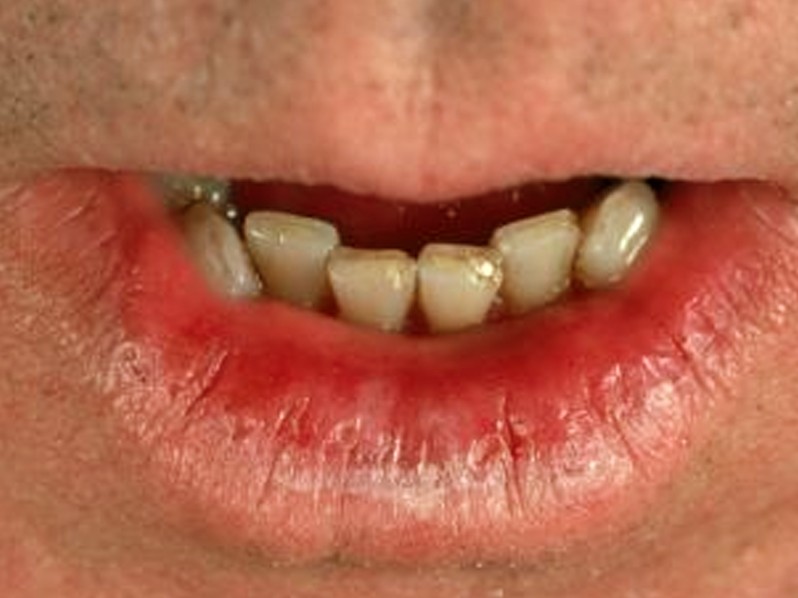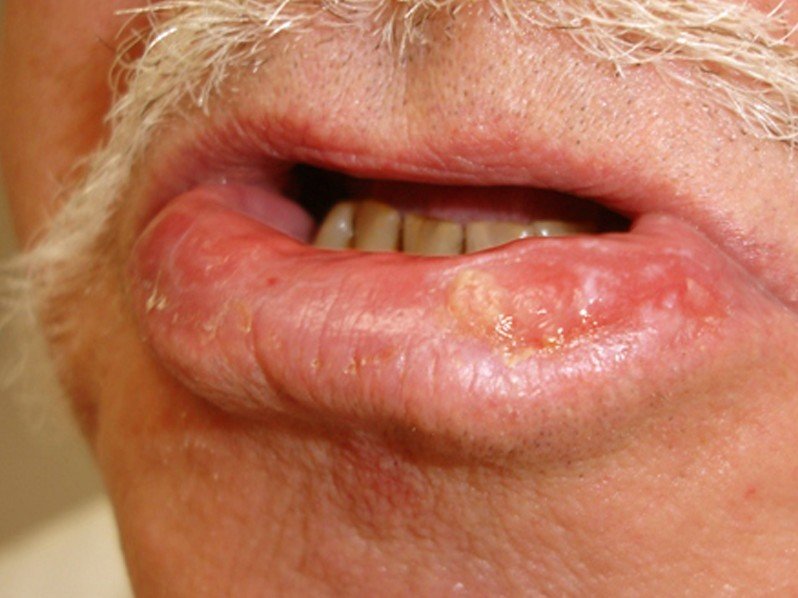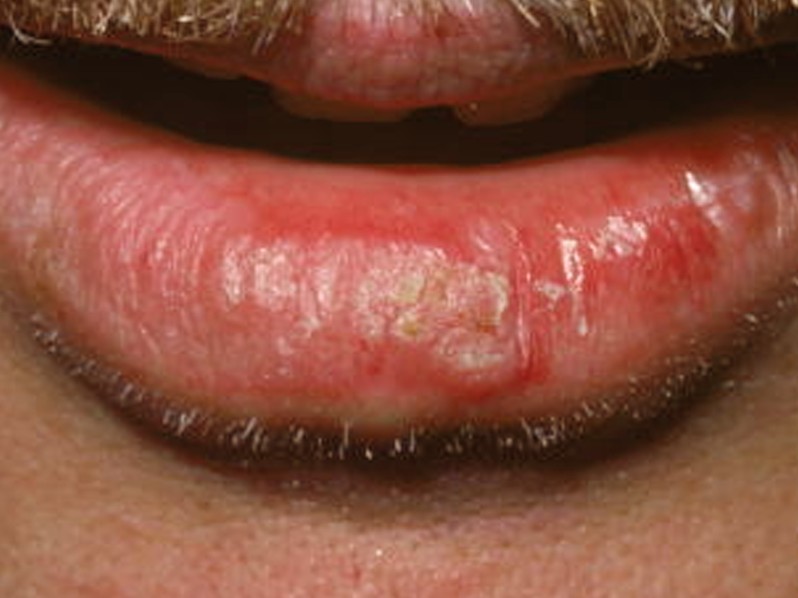Actinic Cheilitis
Last reviewed by Dr. Raj MD on January 12th, 2022.
What is Actinic Cheilitis?
This is a medical condition in which there is inflammation of your lips. It is a counterpart of a skin disorder called actinic keratosis. It has also been referred to as sailor’s lip, farmer’s lip, or solar keratosis which means an abnormal skin growth of your lips. It has also been called accumulative sun damage because it is often seen in people who are outdoors a lot. It is a precancerous condition and will usually affect just the lower lip but in rare cases it can affect the upper lip. In six to ten percent of the cases of actinic cheilitis a person can develop a certain type of skin cancer called squamous cell carcinoma. It is more commonly found in people with fair skin and in males but can happen in both sexes. It can also happen to any age but mostly affects people of middle age.
Actinic Cheilitis Symptoms
The symptoms that occur with actinic cheilitis will vary from patient to patient and may include:
- Thickening of the skin of your lip.
- Having a whitish discoloration of the junction of the skin and the red of the lip, known as the vermillion border, which is one of the more prominent symptoms.
- Losing the sharp border of the skin and the red of the lip.
- The lip may appear slightly scaly.
- In the later stages there may be induration, which is the hardening of tissue that is normally soft. These lesions are usually painless.
- Redness that is persistent.
- Lips may chap
- Having cracks and erosions on your lip.
- Dry lips
- Lips that are pale or white.
- Scaly bumps on the lip that can be crusty.
- Lips that are wrinkled or puffy.
Actinic Cheilitis Causes
The main cause of actinic cheilitis is because of chronic, excessive exposure to ultra-violet radiations, which in layman’s terms means chronic overexposure to the sun. This is why it affects fair-skinned people more because they have less melanin which is the substance that gives your hair and skins its color and is a natural pigment. People whose job requires them to work outdoors for long periods of time are also at risk.
Some of the other causes can include:
- Usage of tobacco products, such as using snuff, on a long term basis and smoking.
- Irritation to your lips because of chemical factors such as using a lip balm that has allergens in it, or physical factors.
- Having very poor oral hygiene.
- Dentures that are ill-fitting and prostheses.
Diagnosis
When you visit your physician or dermatologist they will do a physical exam and take your medical history. If there is the presence of one or more crusty lesions near a vermillion border that is discolored along with other manifestations on your lower lip, they may use these as the basis for their diagnosis of actinic cheilitis. They may also do a biopsy on the lump and do a microscopic examination. The reason that a biopsy may be done is because actinic cheilitis have a greater chance of transforming into a malignancy because they can be a precancerous condition for developing skin cancer.
Treatment
The type of treatment used will vary depending on the severity of the medical condition. If the case is severe but there is no evidence of malignancy a lip shave procedure, referred to as a vermilionectomy may be done. On less extreme cases they may opt to use a carbon dioxide laser (CO2) to destroy the damaged cells.
There are also alternative treatments that can be used such as
- Using electric current to destroy the precancerous cells, known as electrodessication.
- Dermabrasion which is a facial sanding technique.
- Using a tropical therapy along with a chemotherapeutic agent.
- Using topical immunomodulator.
- For minor cases of actinic cheilitis using medication like 5-fluorocil, which work by blocking DNA synthesis.
When you are prescribed a medication to stop actinic cheilitis it can take up to thirty days for it to work and see visible results. When you first start treatment there could burning and erosion of the lesion along with redness and inflammation. Approximately fifty percent of those do treatment respond well and have gone into total remission.
They may also use imioquimod cream which is an immune response modifier. This medical cream will promote in your skin an immune response and will lead to the death of the growth and put it into remission. Using this treatment can also help to prevent any more of the lesions from reoccurring.
Two other treatments that can be used if a patient does not respond favorably to medication and are mainly used to treat small lesions include:
Cryosurgery
Cryosurgery which is when they spray liquid nitrogen on the actinic cheilitis lesion and freezes it off. If the whole lip needs to be treated they may give you a local anesthesia so the procedure will not be painful. This is usually the treatment that most people choose because of a high success rate.
Electrosurgery
This is also known as electrodesiccation and you will need local anesthesia.
There is a possibility that a person could end up with a scar, damage adjacent skin tissue and cause a delay in the healing process. Because the main culprit in this disease is chronic overexposure to the sun when you go out you should wear the right type of sun block, use a lip balm that has sun block, and wear a wide brim hat to protect your face and lips. You should also make sure that you avoid the sun during peak hours if possible. Because this is a precancerous condition you should seek medical attention as soon as you can so the proper treatment can be started but because most of the lesions are asymptomatic many people wait getting them diagnosed and then treated properly.
Actinic Cheilitis Pictures
Photos, Images and Pictures of skin condition Actinic Cheilitis…





